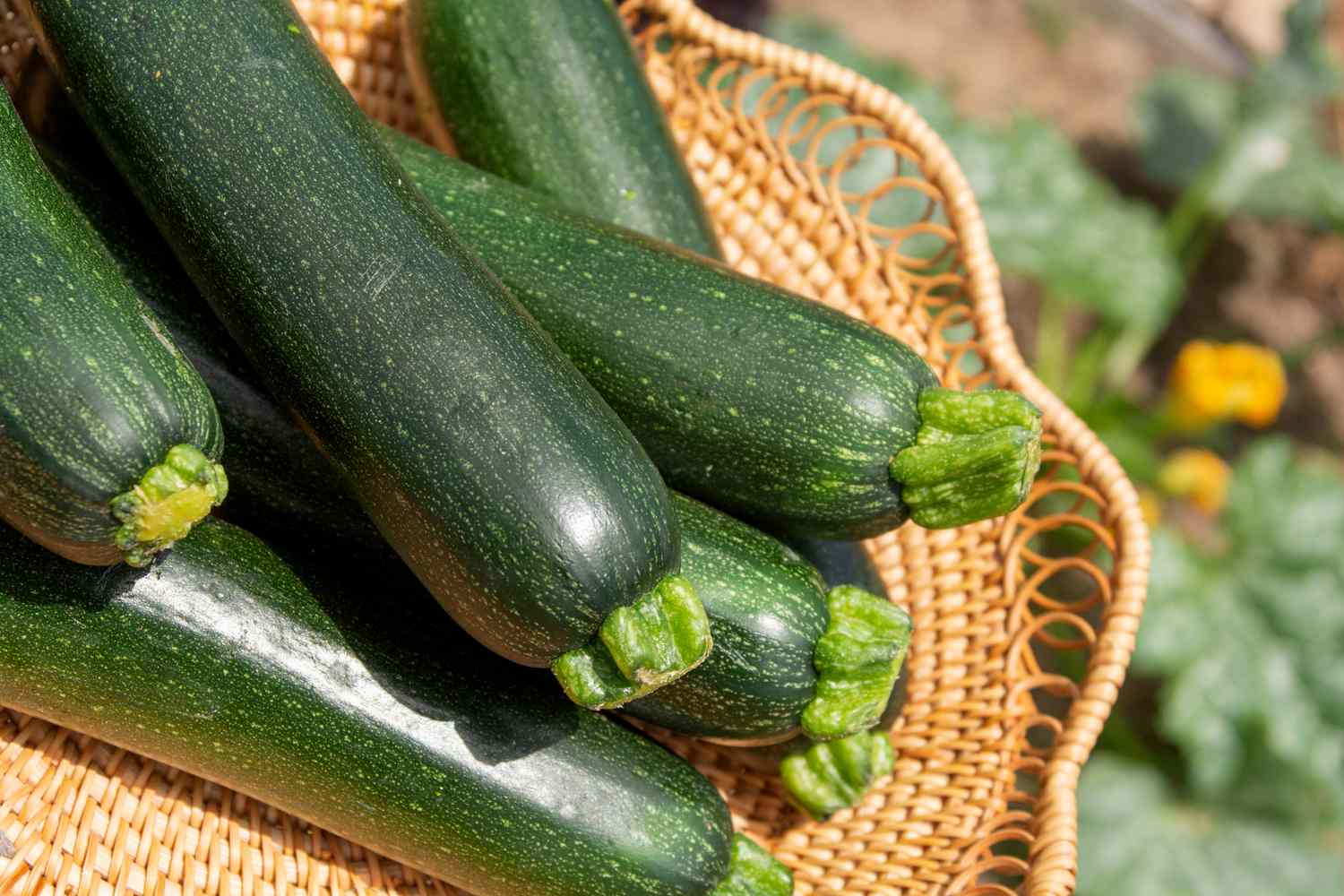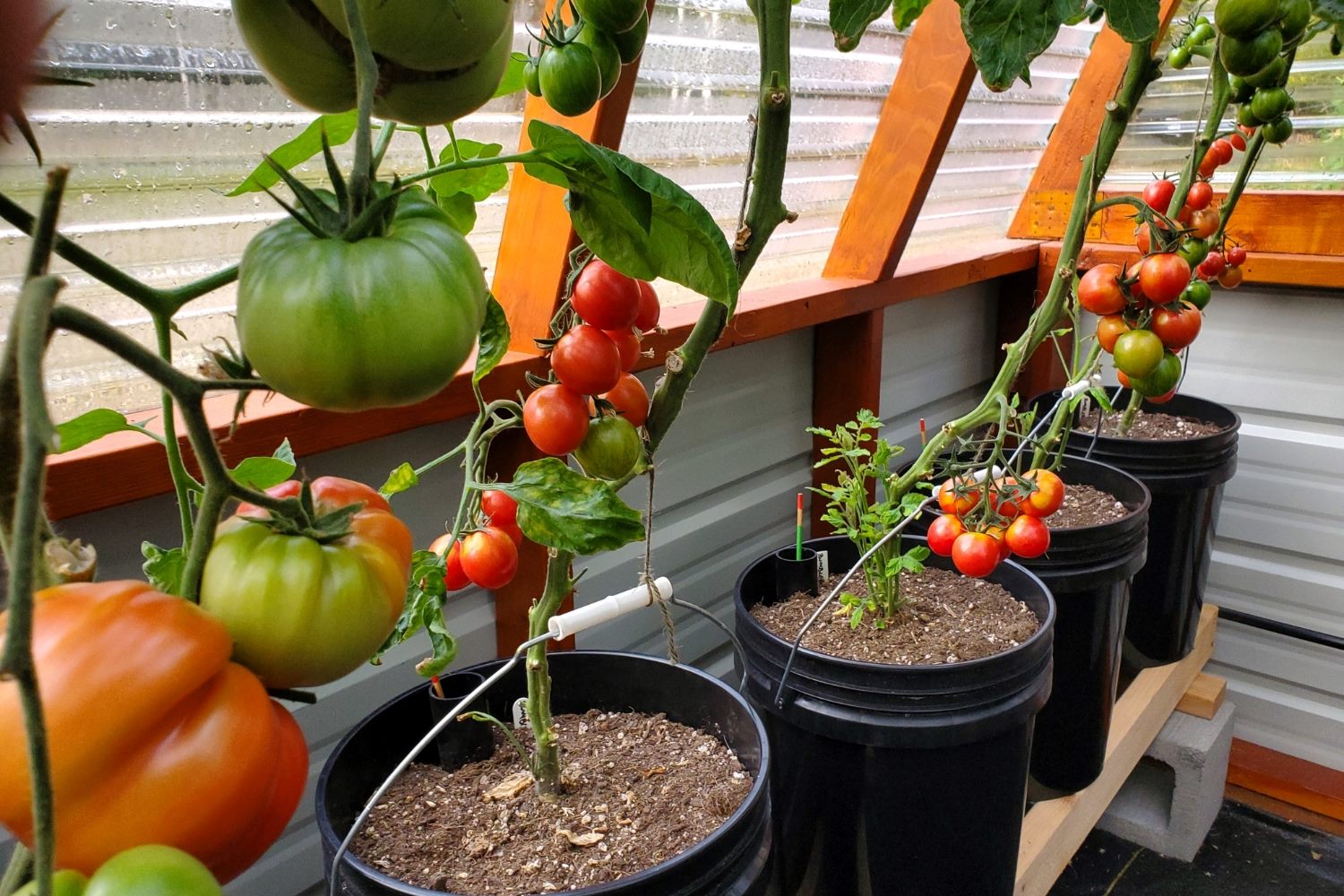Home>Home and Garden>The Surprising Truth About Growing Zucchini In Raised Beds


Home and Garden
The Surprising Truth About Growing Zucchini In Raised Beds
Modified: March 1, 2024
Discover the secrets to successful zucchini cultivation in raised beds. Get expert tips for your home and garden to ensure a bountiful harvest.
(Many of the links in this article redirect to a specific reviewed product. Your purchase of these products through affiliate links helps to generate commission for Noodls.com, at no extra cost. Learn more)
Table of Contents
Introduction
When it comes to home gardening, the allure of growing your own fresh produce is undeniable. The satisfaction of nurturing a plant from seed to harvest is a joy that many enthusiasts cherish. Among the plethora of vegetables that can be cultivated in a home garden, zucchini holds a special place. Its versatility in the kitchen, rapid growth, and bountiful yields make it a favorite among gardeners.
One method that has gained popularity among gardeners is growing zucchini in raised beds. This approach offers numerous advantages, including improved soil quality, better drainage, and easier maintenance. In this article, we will delve into the surprising truth about growing zucchini in raised beds, exploring the benefits, best practices, and potential challenges associated with this method.
As we embark on this journey, it's important to recognize that growing zucchini in raised beds is not just about producing a bountiful harvest. It's about creating a thriving ecosystem where plants can flourish, enriching the soil, and ultimately contributing to a sustainable and rewarding gardening experience. So, let's roll up our sleeves and unearth the secrets to successfully cultivating zucchini in raised beds.
Benefits of Growing Zucchini in Raised Beds
-
Enhanced Soil Quality: Raised beds allow for greater control over the soil composition, promoting optimal conditions for zucchini growth. By amending the soil with organic matter such as compost and aged manure, gardeners can create a nutrient-rich environment that fosters healthy root development and robust plant growth.
-
Improved Drainage: One of the key advantages of raised beds is their superior drainage capabilities. Excess water is less likely to accumulate, reducing the risk of waterlogged soil and root rot – common issues that can hinder zucchini growth in traditional garden beds.
-
Extended Growing Season: The elevated nature of raised beds facilitates earlier planting in the spring, as the soil tends to warm up more quickly. This extended growing season provides zucchini plants with a head start, allowing for a longer period of fruit production.
-
Weed Control: Raised beds offer a natural barrier against invasive weeds, minimizing the need for strenuous weeding. This not only saves time and effort but also reduces competition for essential nutrients, ensuring that zucchini plants thrive without being overshadowed by unwanted vegetation.
-
Easier Maintenance: The raised height of the beds makes tending to zucchini plants more convenient, especially for individuals with mobility limitations. Tasks such as watering, pruning, and harvesting can be carried out with greater ease, making the gardening experience more accessible and enjoyable.
-
Pest Prevention: In some cases, raised beds can serve as a deterrent to certain pests, such as ground-dwelling insects and burrowing rodents. This added protection can help safeguard zucchini plants from potential damage, contributing to healthier and more abundant yields.
-
Aesthetic Appeal: Beyond their practical benefits, raised beds can enhance the visual appeal of a garden. Neatly constructed and well-maintained raised beds can lend a sense of organization and charm to the overall landscape, elevating the aesthetic appeal of the zucchini growing area.
In summary, the advantages of growing zucchini in raised beds are multifaceted, encompassing improved soil quality, enhanced drainage, extended growing seasons, reduced weed pressure, ease of maintenance, pest prevention, and aesthetic enhancement. By harnessing these benefits, gardeners can create an optimal environment for cultivating thriving zucchini plants, ultimately reaping the rewards of a bountiful harvest.
Choosing the Right Raised Bed for Zucchini
Selecting the appropriate raised bed for cultivating zucchini is a crucial decision that can significantly impact the success of the garden. When choosing a raised bed for zucchini, several factors should be taken into consideration to ensure optimal growing conditions for these prolific plants.
Size and Depth
Zucchini plants are known for their expansive growth, both above and below the soil. Therefore, it is essential to opt for a raised bed that provides ample space for the plants to spread out. A depth of at least 12 inches is recommended to accommodate the extensive root system of zucchini and promote healthy development. Additionally, a width of 3 to 4 feet allows for sufficient room for multiple zucchini plants to thrive without overcrowding.
Material
The choice of material for the raised bed is another critical aspect to ponder. While various options such as wood, composite materials, and galvanized steel are available, it is important to select a material that is durable, non-toxic, and resistant to decay. Cedar and redwood are popular choices due to their natural resistance to rot and insects, ensuring longevity and safety for the zucchini plants.
Drainage and Aeration
Proper drainage is essential for the health of zucchini plants, as waterlogged soil can lead to root rot and other detrimental conditions. When selecting a raised bed, ensure that it provides adequate drainage to prevent water from accumulating at the root level. Additionally, incorporating features such as bottomless or perforated beds can enhance aeration, promoting healthy root development and overall plant vigor.
Accessibility
Considering the accessibility of the raised bed is crucial, especially for maintenance tasks such as watering, weeding, and harvesting. Opt for a height that is comfortable to work with, taking into account the gardener's physical capabilities. This consideration not only facilitates ease of care for the zucchini plants but also contributes to a more enjoyable gardening experience.
Location and Sunlight
Lastly, when choosing a raised bed for zucchini, it is essential to assess the intended location and the amount of sunlight it receives. Select a spot that receives at least 6-8 hours of direct sunlight per day, as zucchini plants thrive in full sun. Additionally, ensure that the raised bed is positioned in a level area to prevent water runoff and promote uniform growth across the zucchini patch.
By carefully considering the size, material, drainage, accessibility, and location of the raised bed, gardeners can create an optimal environment for cultivating zucchini. This thoughtful selection process sets the stage for successful zucchini cultivation, laying the foundation for a flourishing and abundant harvest.
Soil and Fertilizer Requirements
The soil composition plays a pivotal role in the successful cultivation of zucchini in raised beds. Optimal soil conditions provide the essential nutrients and support necessary for robust plant growth and bountiful yields. When preparing the soil for zucchini cultivation, it is imperative to focus on key elements such as soil structure, fertility, and pH levels.
Soil Composition
A well-balanced soil composition is fundamental for zucchini plants to thrive. A combination of loamy soil, rich in organic matter, provides the ideal foundation for zucchini cultivation. Loamy soil offers a balanced texture, promoting adequate drainage while retaining essential moisture and nutrients. By incorporating organic matter such as compost, aged manure, or leaf mold into the soil, gardeners can enhance its fertility, structure, and water retention capacity, creating an optimal environment for zucchini growth.
pH Levels
The pH level of the soil significantly influences the availability of essential nutrients to zucchini plants. Zucchini thrives in slightly acidic to neutral soil, with an ideal pH range of 6.0 to 7.5. Conducting a soil test is recommended to assess the pH level and make any necessary adjustments. If the soil is too acidic, the addition of lime can help raise the pH level, while sulfur can be used to lower it if the soil is too alkaline. Maintaining the appropriate pH level ensures that zucchini plants can efficiently absorb vital nutrients, fostering healthy growth and productivity.
Fertilization
In addition to optimizing the soil composition and pH levels, providing adequate fertilization is crucial for supporting the nutrient requirements of zucchini plants. Before planting, incorporating a balanced fertilizer with a higher phosphorus content can promote strong root development and early plant establishment. Once the zucchini plants begin to produce flowers and fruits, transitioning to a fertilizer with higher potassium levels can encourage robust fruit development and overall plant vigor.
Organic fertilizers, such as well-decomposed compost or aged manure, offer a sustainable and nutrient-rich option for enhancing soil fertility. These natural amendments not only provide essential nutrients but also contribute to the overall health of the soil ecosystem, promoting beneficial microbial activity and long-term soil sustainability.
By addressing the soil composition, pH levels, and fertilization requirements, gardeners can establish an optimal foundation for cultivating thriving zucchini plants in raised beds. This thoughtful approach to soil preparation sets the stage for healthy growth, abundant yields, and a rewarding gardening experience.
Watering and Maintenance Tips
Proper watering and diligent maintenance are essential components of successful zucchini cultivation in raised beds. By implementing effective watering practices and proactive maintenance routines, gardeners can nurture healthy zucchini plants and maximize their yield potential.
Watering Guidelines
Zucchini plants have specific watering needs that, when met, contribute to their overall health and productivity. Consistent moisture is crucial, especially during the flowering and fruiting stages. When watering zucchini in raised beds, it is important to adhere to the following guidelines:
-
Deep Watering: Provide deep, thorough watering to encourage robust root development. This entails ensuring that the water penetrates the soil to reach the root zone, promoting strong and resilient root systems.
-
Morning Watering: Opt for morning watering sessions to allow the foliage and soil surface to dry out during the day, reducing the risk of fungal diseases. Additionally, morning watering helps prevent water evaporation, ensuring that the plants receive adequate moisture.
-
Mulching: Apply a layer of organic mulch, such as straw or shredded leaves, around the base of the zucchini plants. Mulch helps retain soil moisture, suppresses weed growth, and moderates soil temperature, creating an optimal microclimate for zucchini cultivation.
Maintenance Practices
Regular maintenance is key to sustaining the health and vigor of zucchini plants in raised beds. By incorporating the following maintenance practices, gardeners can promote optimal growth and mitigate potential issues:
-
Pruning and Thinning: Periodically prune zucchini plants to remove excessive foliage and improve air circulation. Thinning out overcrowded areas allows for better light penetration and reduces the risk of disease.
-
Support Structures: Install sturdy support structures, such as trellises or cages, to provide structural support for zucchini vines and prevent sprawling. This promotes efficient space utilization and facilitates easier plant management.
-
Pest and Disease Monitoring: Routinely inspect zucchini plants for signs of pests and diseases. Early detection allows for prompt intervention, minimizing the impact of potential infestations and preserving plant health.
-
Fertilization: As zucchini plants are heavy feeders, regular fertilization with a balanced, organic fertilizer can bolster their nutrient intake and sustain vigorous growth throughout the growing season.
-
Harvesting: Regularly harvest mature zucchinis to encourage continuous fruit production. Promptly removing ripe fruits also prevents them from becoming oversized and tough, promoting the development of new fruits.
By adhering to these watering and maintenance tips, gardeners can nurture thriving zucchini plants in raised beds, fostering optimal growth, abundant yields, and a flourishing garden ecosystem.
Common Pests and Diseases to Watch Out For
In the realm of zucchini cultivation, vigilance against common pests and diseases is paramount to safeguarding the health and productivity of the plants. By remaining attentive to potential threats and implementing proactive measures, gardeners can mitigate the impact of these adversaries and sustain thriving zucchini crops in raised beds.
Common Pests
Squash Vine Borer
The squash vine borer, characterized by its distinctive red and black markings, poses a significant threat to zucchini plants. The adult moth lays eggs near the base of the plant, and upon hatching, the larvae tunnel into the stems, causing wilting and eventual plant collapse. To combat this pest, regular inspection and the application of row covers during the egg-laying period can help prevent infestations.
Cucumber Beetle
Cucumber beetles, identifiable by their yellow and black striped bodies, can inflict substantial damage to zucchini plants. These voracious pests feed on foliage and transmit bacterial wilt, leading to plant decline. Implementing physical barriers, such as floating row covers, and deploying natural predators, such as beneficial nematodes, can aid in controlling cucumber beetle populations.
Aphids
Aphids, tiny sap-sucking insects, can proliferate rapidly and weaken zucchini plants by draining their vital fluids. These pests excrete honeydew, fostering the growth of sooty mold and compromising plant health. Introducing predatory insects, such as ladybugs and lacewings, can help manage aphid populations and maintain a balanced ecosystem within the raised beds.
Common Diseases
Powdery Mildew
Powdery mildew, characterized by a white powdery coating on the leaves, is a prevalent fungal disease that can afflict zucchini plants. It thrives in warm, humid conditions and can hinder photosynthesis, leading to reduced plant vigor. Employing cultural practices such as adequate spacing between plants, proper air circulation, and applying fungicidal sprays can help mitigate the impact of powdery mildew.
Blossom End Rot
Blossom end rot, a physiological disorder, manifests as dark, sunken lesions at the blossom end of zucchini fruits. This condition is often attributed to calcium deficiency or irregular watering, resulting in impaired fruit development. Maintaining consistent soil moisture and incorporating calcium-rich amendments can aid in preventing blossom end rot and promoting healthy fruit formation.
Downy Mildew
Downy mildew, characterized by yellow angular lesions on the upper leaf surface and grayish-purple fuzz on the lower surface, is a destructive fungal disease that can rapidly spread in humid conditions. Implementing resistant zucchini varieties and applying fungicidal treatments can help manage and mitigate the impact of downy mildew, preserving the health and vitality of the plants.
By remaining vigilant and implementing preventive strategies, gardeners can effectively manage common pests and diseases, fostering the resilience and productivity of zucchini plants in raised beds. Through proactive intervention and a keen eye for potential threats, the garden ecosystem can thrive, yielding an abundant and healthy zucchini harvest.
Harvesting and Storing Zucchini
Harvesting zucchini at the peak of ripeness is essential to ensure optimal flavor, texture, and nutritional value. As these prolific plants are known for their rapid fruit production, regular harvesting is key to maintaining plant vitality and encouraging continuous yield. When it comes to harvesting zucchini in raised beds, a few key guidelines can help gardeners maximize the harvest and prolong the storage life of the fruits.
Harvesting Guidelines
Zucchini should be harvested when the fruits are tender, firm, and approximately 6 to 8 inches in length. It is crucial to monitor the plants closely, as zucchinis can reach optimal size within a matter of days. To harvest, gently grasp the fruit and carefully cut it from the stem using a sharp knife or pruning shears, taking care not to damage the plant or adjacent fruits.
Regular harvesting not only promotes the production of new fruits but also prevents the zucchinis from becoming oversized and tough. Overly mature zucchinis with hardened seeds and tough skin can compromise the overall quality and flavor. By consistently harvesting ripe fruits, gardeners can encourage the continuous development of new zucchinis, ensuring a steady supply throughout the growing season.
Storing Zucchini
Proper storage techniques are crucial to prolonging the shelf life of harvested zucchinis. When storing zucchinis, it is important to handle them with care to prevent bruising or damage. Ideally, freshly harvested zucchinis should be stored unwashed in a perforated plastic bag or container in the refrigerator's crisper drawer. The perforations allow for adequate air circulation, helping to maintain the zucchinis' freshness and prevent moisture buildup.
It is advisable to consume freshly harvested zucchinis within 3 to 4 days to enjoy their peak flavor and texture. For longer-term storage, zucchinis can be blanched and frozen for future use in culinary preparations such as soups, stews, and baked dishes. Properly blanched and frozen zucchinis can retain their quality for up to 12 months, providing a convenient and nutritious ingredient for various recipes.
By adhering to these harvesting and storage practices, gardeners can savor the abundant yields of zucchinis from raised beds while ensuring that the fruits remain fresh and flavorful for culinary enjoyment. The careful application of these guidelines not only maximizes the harvest but also extends the availability of homegrown zucchinis, enriching culinary endeavors with the wholesome goodness of freshly harvested produce.
Conclusion
In conclusion, the journey of growing zucchini in raised beds unveils a myriad of benefits, challenges, and rewarding experiences for home gardeners. The surprising truth about this approach lies in its ability to transform the cultivation of zucchini into a thriving and sustainable endeavor, offering a host of advantages that contribute to the overall success of the garden.
By harnessing the enhanced soil quality, improved drainage, extended growing season, weed control, and ease of maintenance facilitated by raised beds, gardeners can create an optimal environment for zucchini plants to flourish. The elevated beds not only provide a practical solution for space-constrained areas but also elevate the aesthetic appeal of the garden, adding a touch of organization and charm to the zucchini growing area.
The careful selection of the right raised bed, considering factors such as size, material, drainage, accessibility, and location, sets the stage for successful zucchini cultivation. This thoughtful decision-making process ensures that the raised beds provide an ideal habitat for zucchini plants to thrive, fostering healthy growth and abundant yields.
Furthermore, the meticulous attention to soil composition, pH levels, and fertilization requirements lays the groundwork for a nutrient-rich and balanced ecosystem within the raised beds. By addressing these essential elements, gardeners can create an optimal foundation for cultivating thriving zucchini plants, ultimately reaping the rewards of a bountiful harvest.
The implementation of effective watering practices, diligent maintenance routines, and proactive pest and disease management strategies further contributes to the resilience and productivity of zucchini plants in raised beds. By adhering to these guidelines, gardeners can nurture healthy zucchini crops, maximizing their yield potential and sustaining a flourishing garden ecosystem.
In essence, the journey of growing zucchini in raised beds transcends the act of cultivation; it embodies the art of nurturing a thriving ecosystem, fostering sustainable practices, and reaping the rewards of homegrown abundance. Through the careful integration of best practices, thoughtful decision-making, and a passion for gardening, the surprising truth about growing zucchini in raised beds unfolds as a journey of discovery, resilience, and the simple joy of cultivating nature's bounty.










